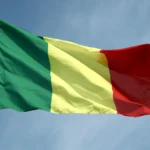
The Dominican Republic is a Caribbean nation that shares the island of Hispaniola with Haiti in the west. It is known for its Caribbean beaches, resorts and golf courses. Its terrain includes tropical rainforests, savannas and highlands, including Pico Duarte, the highest mountain in the Caribbean. The capital, Santo Domingo, has Spanish monuments such as the Gothic Cathedral of America, which dates back 5 centuries in its Zona Colonial neighborhood.
The Dominican Republic was first inhabited around 5000BC with farming villages established around 300BC.
February 27, 1844, is the official independence day of the Dominican Republic.
Christopher Columbus was the first European to explore the Dominican Republic in 1492. He landed and named the island La Isla Española (The Spanish Island), which later became Anglicized as Hispaniola.
Voting is not permitted to the members of the armed forces and the national police.
The Dominican Republic’s flag is quartered blue-red-blue-red with a central white cross containing the country’s coat of arms. The blue stands for liberty, the red for the blood of heroes and the white for salvation and Christianity.
Coffee, sugar, and tobacco are the island’s main sources of income. Tourism is also playing an important part in supporting the economy now.
The coat of arms features a central shield with the national flag, a Bible, a cross, branches of laurel and palm, the name of the country, and the motto “Dios, patria, libertad” (“God, fatherland, liberty”).
The country experiences warm and sunny conditions for most parts of the year. For this reason, the climate of D.R. is also known as an “endless summer.”
The name of the country is derived from the capital city of Santo Domingo (Saint Dominic), which in turn was named after Saint Dominic de Guzman (1170-1221), founder of the Dominican Order.
Baseball is their national sport.
The Dominican Republic’s flag is the only flag in the world to feature a Bible.
They have a beer named “Presidente.”
Hispaniola is the second-largest island in the Caribbean (the Antilles) after Cuba.
It is the largest economy in the Caribbean and Central American region, and the tenth-largest economy in Latin America.
In 2020, a new species of boa was discovered in the Dominican Republic – the first of its kind for 133 years. The tiny snake, known as the Hispaniolan Vine Boa (Chilabothrus ampelophis), has “wide eyes, a unique zig-zagging scale pattern, and a square snout”.
D.R. also served as headquarters for the pirates of the Caribbean during the mid 17th century. Pirates recruited people here for raiding Spanish treasure ships.
In 1965, the USA invaded the Dominican Republic in an attempt by US President Lyndon B Johnson to forestall a “communist dictatorship” during unrest in the country.
The Colonial City of Santo Domingo is a UNESCO World Heritage Site.
The oldest standing cathedral in the Western hemisphere is in the Dominican Republic. The first stone of the Catedral Primada de América was laid in 1514 by Diego Columbus, the son of Christopher Columbus. The ashes of both father and son apparently once resided in the chapel’s crypt.
In the area, the island nation is slightly more than twice the size of New Hampshire. It shares a land boundary of 376 km with Haiti.
The Dominican Republic is widely referred to as “the DR”.
More than 50% of the land of the island is used for agriculture, while 40% is covered by forests.
25% of the Dominican Republic’s land is protected within 29 national parks.
The Dominican Republic is the only country in the world to produce a rare blue variety of the silicate mineral pectolite. Its color changes from white, light-blue, green-blue to deep blue.
Cars can appear to roll uphill in Polo Magnético in the Dominican Republic. Polo Magnético is home to a “gravity hill,” an optical illusion caused by a slope’s shape and its relation to the surrounding landscape. A car put in neutral gear, with the brake disengaged, will appear to be “pulled” uphill.
Abortions are banned in the country, even in cases of rape and serious health problems of pregnant women.
One of the most popular tourist attractions in the Dominican Republic are the 27 Waterfalls of Rio Damajagua, a series of cascades featuring natural swimming pools and natural chutes to slide down as well as ladders for climbing.
Peso (DOP) is its currency.
The Dominican Republic is home to the highest mountain in the Caribbean. Duarte Peak (previously known as Mount Loma Tina and Trujillo Peak) rises 3,175m (10,417ft) above sea level.
The natives or inhabitants of this country are called Dominican.
The Dominican Republic is considered to be a world-class birdwatching destination with at least 310 confirmed bird species and 32 endemic bird species on the island.
Spanish is the official language of the Dominican Republic.
The Dominican Republic’s Lago Enriquillo is the largest lake in the Caribbean.
The Dominican Republic is the 86th most populous country in the world.
Lake Enriquillo is also the region’s lowest point: in 2013 its surface was 34m (112ft) below sea level.
Majority of the tourists come from the United States and Canada.
The Parque Nacional Cotubanamá is a series of over 400 caverns and caves in the Dominican Republic.
The Dominican Republic is known as the “Breadbasket of the Caribbean.”









